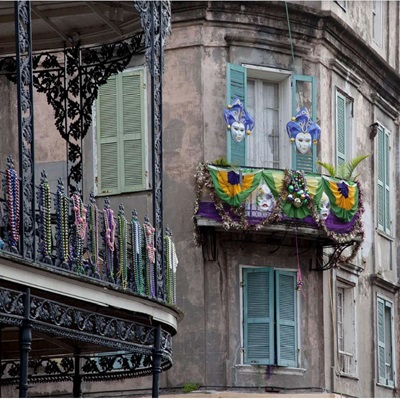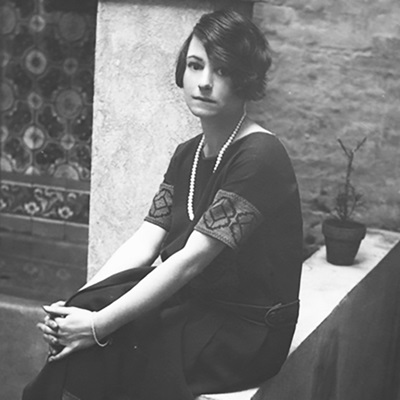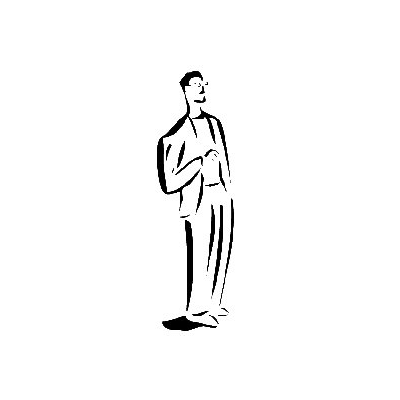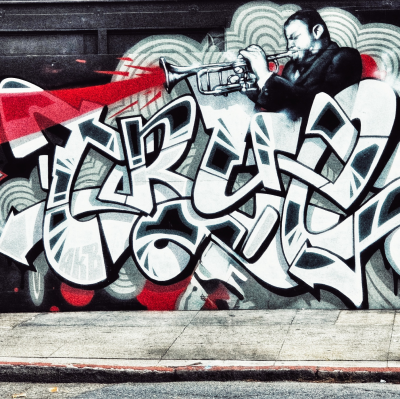.
.
…From “Fatha” Hines to Brad Mehldau, poets open themselves up to their experiences with and reverence for great jazz pianists…
.
.
photo by William Gottlieb/Library of Congress

Earl Hines, New York, N.Y.
Mar. 1947
.
___
.
A Solitary Premiere
While thumbing through an old copy of Gottlieb
a “Fatha” Earl photo popped off the page
smoke curling from a cigar butt prominent as that grin
striding through the keys in comfortable satisfaction.
Whispered images coincide.
Hard shoes at the cuff of high drape pants
pleated skirts flared and twirling
glassware raised over laughter.
Serendipitous then
that at the same moment
a previously unheard union creates a cyber singularity
and this is when Hodges joins Hines
and divides Blues in 3rds from his toned lean alto
deftly peppered on all the right edges,
getting lost, perdido as it were, in the notes of Tizol
by way of Duke with a Kenny Burrell leg up.
To some I suspect, such language
as theirs may be difficult, past tense, arcane
though I find it to be current as terracotta
fired just fine
.
by Terrence Underwood
.
___
.
piano man
left hand rolls
rockin’ boogie bass
right hand frolics
with a melody
feet tapping
like st. vitus on fire
song’s end
both hands glide
down the entire tusk
and without pause
pick up a slow
through your heart
and out your mind
blues rhythm
i see him
smile at the sax
who slips in mellow
full of pain
goose bumps
i get goose bumps
for these blues
my fingers drumming softly
the table where
your hand rested
yesterday
………….first published in Verse-Virtual, October 2015
.
by j.lewis
.
___
.
The Language of Swing
“You hear words.
I hear music”
– Mary Lou Williams
At the age of 3
At your mother’s knee
Is where the language begins
Pianist extraordinaire: Musical spirits!
The blues embedded; the soul and the healing
Of what would become a true conversation
The First Lady of Jazz
In all that you spoke into
Existence; the mental telepathy,
The language of Kansas City Swing!
Your musical ministry, with the blues
Underlying everything
“Real jazz dirty”
Or spiritual enough to defy those
Who would call it the devil’s music
All genres of jazz, no boundaries
From Hines, Calloway, Goodman and Dorsey
To an equally amazed Satchmo and the Duke
They all wanted in on what you were
Saying: the blues, boogie-woogie and swing?
It’s clear you could arrange anything
Trumpets No End (say that again!)
Zodiac Suite (please repeat!); even asked
By the Vatican to pen Mary Lou’s Mass
It’s a musical conversation and here’s what sums it up
For me: The wit and swing of everything that you said
In the Land of Oo-Bla-Dee!
.
by Connie Johnson
.
___
.
Maiden Voyage—Herbie Hancock
All of life is before
you— the stage is
filled
with music stands, mic
cords, a scrim of
Caribbean colors.
Bass is coming in like
waves against rock,
steady drumming, cymbals
slapping against the wind.
Piano sails, tilt and swing
through slanted sun—boom
gliding swiftly port to
starboard
in the shadow of the lee—
as the boat cuts precisely
pointing healed over;
crew changes footing & the boat
tacks, Direction unknown:
Never one to be
channeled into being
predictable
or following channel
markers or harbor
speeds,
H. H. took chances, ignored
storm warnings, but always
found other shores, islands in the
stream, as well as uncharted
territory.
.
by DH Jenkins
.
___
.
My Song
…………..for Keith Jarrett
It came to my heart’s rescue
before I knew my heart was in distress,
the saxophone caressed me,
the piano sat down to speak with me
like a father at a dugout’s bench,
after I struck out time after time.
To be young is to be passionate
and eminently clueless,
a bird pushed from a nest
before it feels its wings,
a man, but still a boy,
hiding his precarious breath.
.
by Juan Mobili
.
___
.
Muchas Gracias Mister Silver
On a day bleeding with sorrow and grief,
both human and in nature, I put on an old
recording by Horace Silver from 1964,
“Song for My Father,” and all around me
the world was transformed. Memory
of first time I heard the music lifted me
to my feet, something no longer easy to do.
I was swinging and swaying, tapping my
feet (clumsily) but with exuberance; piano,
horns, bass, drums, eased grief from my heart,
made normally painful stillness move wildly
with an ardent embrace of life, children chasing
balls in the street, people of all ages arm in arm,
and the piano lured me to hum the melody while
my body celebrated the simple fact of movement.
The couple fighting downstairs stopped their war
to stare at me whirling and swirling in a clumsy
old man’s wildly festive homemade dance
along the balcony outside my window;
children laughed and pointed, then danced
with a freedom and skill well beyond
anything I have ever done; when the music ceased,
I bent over, out of breath, laughing, having
rediscovered the beauty of the fervent embrace
of life that music can bring; as I stood up, an elderly
neighbor who had long made clear how much he
loathed me, cut a brief rug, and waved, as he laughed,
then returned to cutting his lawn. I limped back to my
living room with my normal slow shuffle, yet I kept
humming Mr. Silver’s tune, running riffs of my own
in a gravelly voice, grateful to have found a reason
to live, and seen others share my discovery.
.
by Michael L. Newell
.
___
.
.
Driving Back Roads Listening to Randy Weston
It’s a long way from West Africa
to Ulster County, New York back roads,
on bored Sunday afternoons
I drove my over the hill Duster
with a portable cassette deck,
extra batteries in the glove box
through the tangle of backroads
from Woodstock to Saugerties
on this occasion it was Randy Weston’s
“HIGHLIFE” album,
‘Niger Mambo’ and ‘Congolese Children’
beckoned swaying branches of red, yellow autumn
to become undulating patterns of african dancers
while the texture of stone walls
stones round and square locked and balanced
swished by like poly fingered drum rhythms
music of distance, the openness of sub-saharan heat
music of closeness as sound always crosses boundaries
a quarter century later in Montreal
I saw Weston live and ‘Niger Mambo’
brought back in high relief one lonely afternoon
of many when highlife dancers met the chill
of autumn, and congolese children sang
and danced the aroma of spring.
.
by Daniel W. Brown
.
___
.
Brubeck
In a cool gray city
I’ll meet you at the gateway
San Francisco, bayside delicious
“But I don’t even like jazz,” you
protest; just trust me!
The Black Hawk at the corner of
Turk & Hyde in the Tenderloin
That’s where we’ll fly on honeyed
wings; cool jazz delivered by the
Dave Brubeck Quartet:
Desmond
Morello
Wright
Always an emphasis on
what was right and just
Mythic status!
Inspired by “the Other”
A branded Black cowboy
named Shine
Jazz ambassador; civil rights
legacy. It’s easy to see that
“…jazz stands for freedom”
Long meters
Polytonally
Polyrhythmic – “you can
never exhaust that”
Cool jazz where we
Take Five in 5/4 time
We make millions
We are the gateway
“….you can be beyond yourself; you can
be better than your technique”
Dave Brubeck:
We fight for inclusion
We emphasize what
is right. At the Black Hawk,
Pilgrimage site, we Take
Five; justice and inclusion
materialized
.
by Connie Johnson
.
___
.
A Few Words About Monk
Even in photos, he was a man
who radiated power – his music
was a mixture of poetry, luxurious
beauty, and fierce anger at a world
that too often did not recognize
his people, old and young. His bass
sung of life’s heartbeat, loss, creation,
and always was filled with imagination.
There have been musicians who were
technically his equal, but only the greatest
shared his vision, passion, refusal to surrender
to the endless cruelties of the world.
He was a herculean voice who recognized
life’s horrors, but also filled the world
with beauty, humor, and endless innovation.
.
by Michael L. Newell
.
___
.
Epistrophy
There is music in my head, Popeye thought,
And it is the improvisational
Piano music of Thelonious
Sphere Monk, spontaneous, urban, and real,
The music of my mind, Popeye decid-
Ed, as Monk played “Epistrophy,” what he
Usually played just before the band took
A break, a kind of signature bit of
Jazz, Monk playing something completely not
The same as his band, but that is exact-
Ly what Popeye liked about listening
To Thelonious Monk, improvising
Wildly on the keyboard, and then winding
Up where his group was on the last blue note.
.
by M.G. Stephens
.
___
.
Monk-Like
…………………………like
lunge clump …canopy canister …fraught ganglia, chop
butterudder ……………………………………………back
………………………………………………………………..forward
………………………………………………………………..this way
………………………………………………………..that
twist turn…………………………… vertiginate
………………….swallow ………swelter
claim cluster clank crank ……………rustle roundabout
…………………………..c ..l ..a ..m
………………bustle break bother broke brother
………………bother bustle break brother broke
………………………………………………….bristle
………………………………………………………..breathe
……………………………………………………………bombin-
ate ……..fables of late ……..bludgeon bark ….bake
………………….sleight slumber swell
……….B Flat …………….line periphery-burst ……………..stride
intervallic surge …………………….sully sulk ……..skulk
…………………………………………………………..atti-T!ude
feud fidelity
………………….ferm………… en
………………………………..ta……….. tion
……………………………….in-
……………………………….stall
……………………………….un-
……………………………….install
.
by Heller Levinson
.
___
.
Piano on a Gray Day
The Worker Bee brings
Light on a gray day, like
Brad Mehldau brings jazz
Into my kitchen, his melodies
Filling my space, and her face
Becomes a portrait of Sicilian
Skies, her eyes, hold dreams of
Italy, she goes, walking in the
Hills of Tuscany, leaving piano
Notes in her wake, she is breezy
As pinot grigio, her song, my soul
To take, like a piano’s song, she is
Endless and effortless, like Brad’s playing,
She is bountiful effervescence
If I should die before I wake
May I see her strolling on
The streets of Rome, her song
My soul to take…
.
by Erren Kelly
.
___
.
Being
What’s that?
A neighbor
Being in
Asked
The reply
It’s Brad
Being
Mehldau
.
by Terrence Underwood
.
.
_____
.
.
.

Daniel W. Brown has loved jazz (and music in general) ever since he delved into his parents’ 78 collection as a child. He is a retired special education teacher who began writing as a senior. He always appreciates being published in journals and anthologies. At age 72 he published his first collection Family Portraits in Verse and Other Illustrated Poems through Epigraph Books, Rhinebeck, NY. Daniel writes daily about music, art and whatever else catches his imagination.
.
.
___
.
.

DH Jenkins’ poems have appeared in Jerry Jazz Musician, Kelp Journal, and The Ekphrastic Review. His new book of poetry, Patterns on the Wall, is available on Amazon.com. He lives in New Zealand.
.
.
___
.
.
.
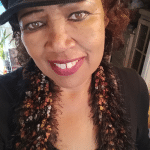
Connie Johnson is a Los Angeles, CA-based Pushcart Prize nominee whose poetry has appeared in Jerry Jazz Musician, San Pedro River Review, Cholla Needles, Rye Whiskey Review, Glint Literary Journal, Iconoclast, Sport Literate, Exit 13, and Writing in a Woman’s Voice. Everything is Distant Now (Blue Horse Press), her debut poetry collection, is available on Amazon.
Click here to read the Jerry Jazz Musician-published In a Place of Dreams: Connie Johnson’s album of jazz poetry, music, and life stories
.
.
___
.
.

Erren Kelly is a three-time Pushcart nominated poet from Boston whose work has appeared in 300 publications (print and online), including Hiram Poetry Review, Mudfish, Poetry Magazine, Ceremony, Cacti Fur, Bitterzoet, Cactus Heart, Similar Peaks, Gloom Cupboard, and Poetry Salzburg.
Click here to read “Under Quarantine” — COVID-era poetry of Erren Kelly, published by Jerry Jazz Musician
.
.
___
.
.

Heller Levinson’s most recent books are Query Caboodle, Shift Gristle (Black Widow Press, 2023), The Abyssal Recitations (Concrete Mist Press, 2024), and Valvular Ash (BWP, 2024). His book Lure won the “2022 Big Other Poetry Book Award.” Click here for a recent review of his work.
.
.
___
.
.

j.lewis is a musician, psych nurse practitioner, internationally published poet, and the editor of Verse-Virtual, an online journal and community. When he is not otherwise occupied, he is often outdoors, exploring and photographing the open spaces near his home in California. He is the author of five full length collections, plus eleven chapbooks. Click here to visit his website.
.
.
___
.
.
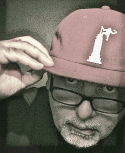
Juan Pablo Mobili was born in Argentina. His poems appeared in The American Journal of Poetry, Hanging Loose Press, Paterson Literary Review, among others, as well as many journals around the world. He received multiple nominations for the Pushcart Prize, and his chapbook, Contraband, was published in 2022.
.
.
___
.
.
Michael L. Newell’s most recent book of jazz poetry is Don’t Fret. He lives on the east coast of Florida.
.
.
___
.
.
M. G. Stephens is author of 27 books, most recently the novels King Ezra and Kid Coole (both published by Spuyten Duyvil in 2022), and History of Theatre or the Glass of Fashion, prose poems and poetry (MadHat Press, 2021). Forthcoming in 23: Ornithology, poems (Finishing Line Press) and Jesus’ Dog, stories, from Paycock Press.
.
.
___
.
.
.
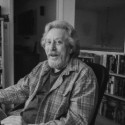
Terrance Underwood is a retired Gas Turbine Package Engineer whose career offered opportunities to work all over the world. A devoted jazz enthusiast, his first memory operating a mechanical devise was a 4-speed spindle drop record changer for his father’s collection of 78s.
Click here to read Proceeding From Behind: A collection of poems grounded in the rhythmic, relating to the remarkable, by Terrance Underwood
.
.
_____
.
.
Click here to read The Sunday Poem
Click here to read “A Collection of Jazz Poetry – Spring/Summer, 2024 Edition”
Click here to read “Ballad,” Lúcia Leão’s winning story in the 65th Jerry Jazz Musician Short Fiction Contest
Click here for information about how to submit your poetry or short fiction
Click here to subscribe to the (free) Jerry Jazz Musician quarterly newsletter
Click here to help support the ongoing publication of Jerry Jazz Musician, and to keep it commercial-free (thank you!)
.
___
.
.
Jerry Jazz Musician…human produced (and AI-free) since 1999
.
.
.







